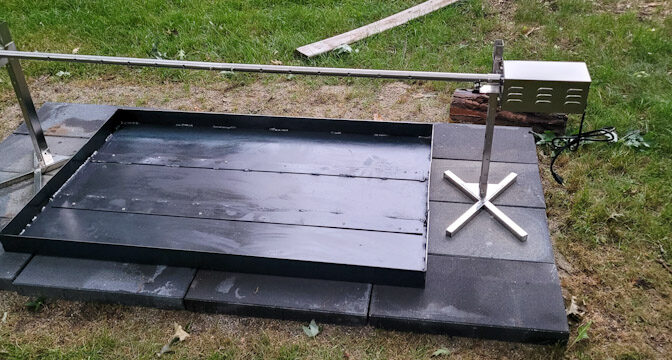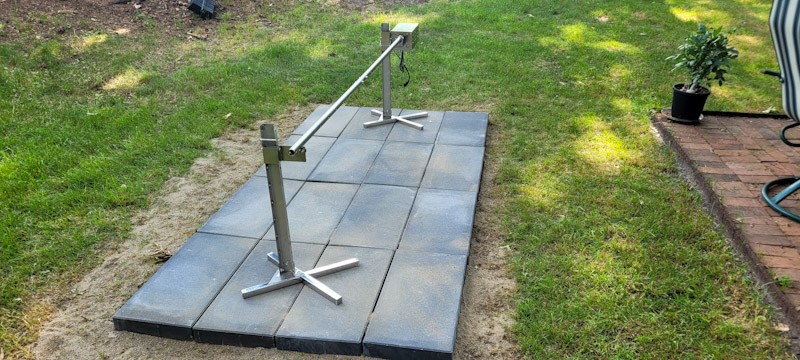For my daughter’s wedding, we plan to cook a whole pig on a spit with the spirit of traditional Filipino “Lechon” in mind. My wife is from the Philippines and we’ve been married for 28 years so I’ve met tons and tons of close and extended family. Over the years, there have been tons of barbecues and Filipinos seriously know how to grill. When my wife first brought up the idea of our cooking a whole pig and making lechon, I got excited because it would combine some things I really like doing – grilling, figuring out some mechanical stuff and bringing family together.
How do you cook lechon?
In the traditional manner, a bamboo pole serves as the “spit” rod. The pig is cleaned, filled with a stuffing that varies from family to family. The spit is rested on two posts and the pig is turned over a charcoal fire that is in the a trench in the ground. The family members will then turn the pig continuously for 4-6 hours usually while drinking alcohol the whole time :-). In the next post I will get into the details of the recipe but you get the idea – it takes a long time and the Filipinos will tell you “low and slow” meaning it is relatively low heat and it’s going to take a while – as in and hour and 15 minutes per 10 pounds of pig slow. Now, your’s truly can’t sit still for hours so I needed to figure out how to do this mechanically and that is really the focus of this first post.
How do you make a rotisserie big enough to turn a pig?
Okay, I have no experience with big spit rotisserie systems so I had to start reading and talking to people. They say you get about half the weight of the cleaned pig in meat – so if you get a 100 pound then you get about 50 pounds of meat. A number of folks told me to think of the pig as presentation and do extra meat via pork butts to keep things easier. At any rate, my wife was thinking 75-80 pounds – maybe 100 pounds so I figured I needed something that had a working load around 85 pounds.
In reading about rotisseries, I found guys either built or bought them. Well, I have never seen a rotisserie for a full size pig – just cooked pigs. I watched a few videos and decided I better buy one to get started. That way I could see one first-hand and learn what worked and what didn’t.
Since we were planning a 100+ pound pig, that ruled out all of the little rotisseries and we would also need the longest spit pole I could find – they tend to be 72″/6 feet max. If you plan to only do 40 pound pigs you can get a lot smaller units – including the enclosed ones that will cook the pig faster since the heat surrounds them kind of like an oven.
In my case, I couldn’t justify some of the beautiful trailers and the custom rotisserie systems that were out there but I did read the read-to-go units very carefully. I also decided to go with something largely ready to go vs. making it piece by piece – why? Again, brand new territory for me. Nobody had written a “here, now think about these things to build your rotisserie system” guide. I found some posts that touched lightly on it but not enough for me to gamble on building a machine I had never seen in action.
Moving on, I read just a tons of Amazon product ads, reviews, forum posts and Youtube videos about pig/hog rotisseries. One thing I noticed were recurring warnings that many Chinese rotisseries way overstated their weight capacity and also the capacity of the motor they used.
Need a quality motor
One of the things vendors do with the rotisseries is to brag about how many watts their motor is. That drives me nuts. “Watts” are a measure of energy transfer over time. A poorly made motor may draw more watts and have have less output power than a high quality motor that draws fewer watts but outputs more power to the spit. So, to brag that a motor uses 40 watts doesn’t help matters – you will see this a lot when vendors try to hype up whatever they are trying to sell with an electric motor – vacuums, tools, or in this case, spit motors.
The quality of the motor is extremely critical – it will need to turn whatever size pig (goat or whatever) that you plan to cook for hours and hours. By the way, a 100 pound pig / 10 x 1.25 hours per 10 # means it will be turning for 12.5 hours and need to handle a load that is relatively balanced while also being exposed to some degree of heat.
I read once that cook an animal on a spit is a big deal – if you fail then there are going to be a lot of hungry disappointed people who know it. Bottom line, don’t get a poorly made system or motor.
Some vendors fluff up the weight capacity of their rotisseries
The second thing some vendors do is to overstate the weight capacity of their system. This is where you need to read up on each vendor using Amazon and Internet in general to find out what people say. You also need to look very carefully at the design.
The capacity of the system will be limited by the motor, the spit (how thick and long it is) and how you support the loaded spit.
What is can you look for in photos to start to form an opinion about the quality of the rotisserie?
When I look at a product, I look at the design and look for weaknesses. If a person is going to turn a relatively heavy load, what would be critical? How the spit is supported and how it connects to the motor. Now this is how we can immediately set apart the serious contenders. If I were to design a rotisserie, I would put the spit on sealed roller bearings that at least contact it on the bottom and then I would have a way to take the strain off the shaft of the motor. Boom – immediately something I could look for in productt photos that would rule a model in or out. The cheap ones connect the spit pole straight to the motor shaft via a coupling and/or have the spit sitting on a piece of sheet metal vs. bearings.
I went with SpitJack
Now that you have some background, I went with a brand known as SpitJack. You can find many of their products on Amazon or deal with them directly. Spitjack was formed in 2014 by Bruce Frankel who has a passion for grilling and is a former chef and restraunteur in the Northhampton, MA, area. I called their 800# and Bruce himself answered the phone. He did a great job at answering my questions and you can see from all of the photos and YouTube videos that these are quality systems.
They have two models of complete systems that I considered – the CXB85 – rated for 85 pounds and the CXB125 – rated for 125 pounds. I wound up doing a bit of a hybrid. Since I was talking to Bruce, I ordered the CXB84 with the accessories that come with it but upgraded the motor and spit to the ones from the CXB125. In hindsight, I would tell you to get the CXB125 so you have more accessories for fastening bigger pigs – I found this out when we cooked our 101 pound pig that I will tell you more about in the next post.
While the SpitJack systems are more expensive than their imported competitors, the engineering and build quality are far superior plus Bruce and team support what they sell.
What arrived?
The system arrived very well packed and Bruce will tell you to inspect everything and test it. Their system comes with instructions and suggestions plus their videos help. As far as assembly goes, it was simple. Three screws and nuts to fasten the upright columns of the stands to their bases, I had to tighten the screws on the roller bearing assembly on the end column and that was it.
Now this is where customer services makes a huge difference. When I looked at the motor, they had shipped the standard 40 watt motor vs. the 125 watt model I had ordered. I called Bruce and he told me to use the 40 watt motor if I needed to, he would get the 125 watt model out that day via UPS and then send the 40 watt motor back. He would include a UPS label for that also. Wow. No hassle and he moved fast to make it right. Folks, that kind of customer service is worth a lot to me. No filling out forms, no arguing just a rapid correction of an honest mistake on their part.
Making a rotisserie grill area
One of Bruce’s recommendations was to just dig a slit in the ground for the charcoal and cook the first time to see how things go. My wife didn’t like that idea and wanted it to be neater so we did two things – we made a 4×8 area with patio blocks and I welded together a 36×54″ firebox from 1/8″ thick steel to hold the charcoal.
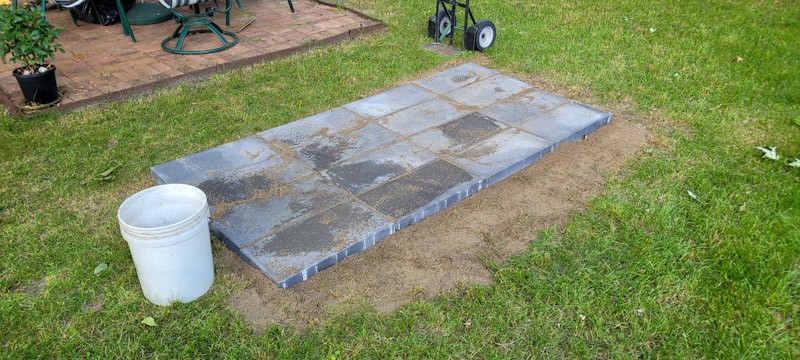
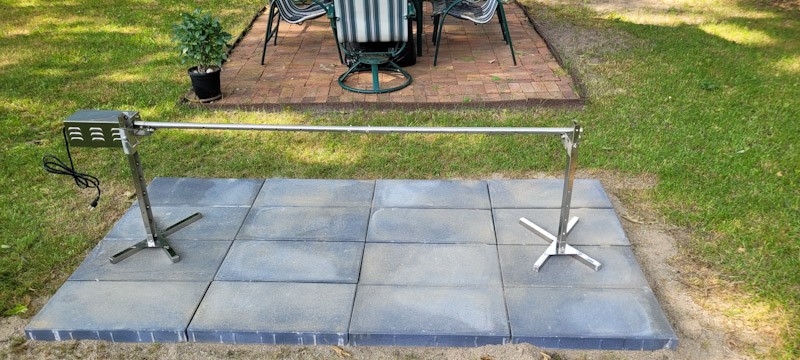
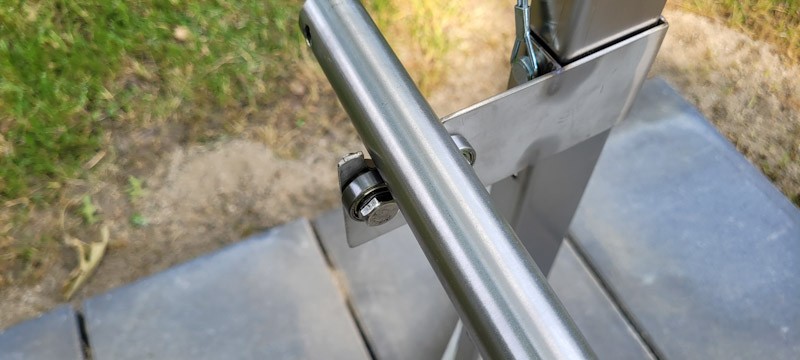
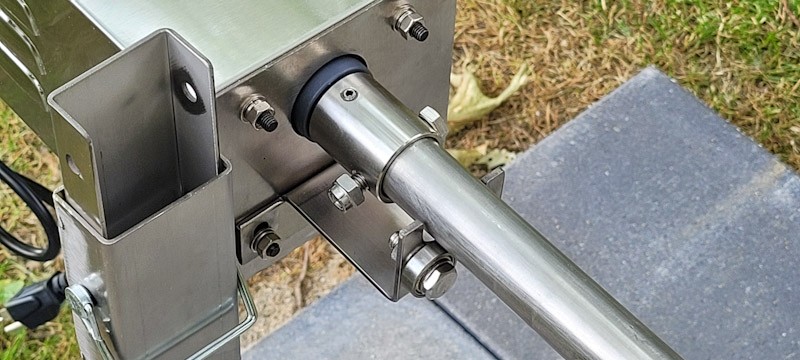
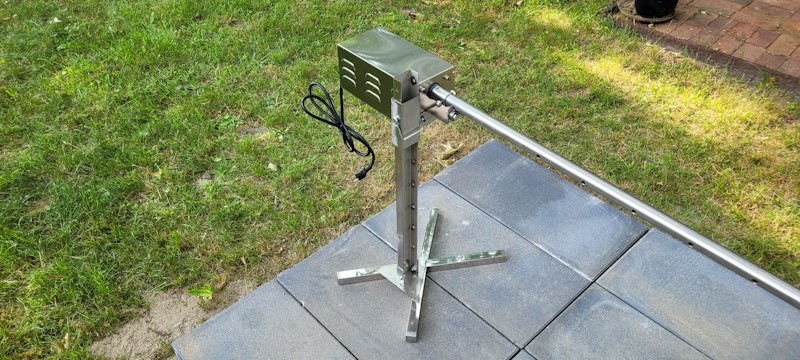
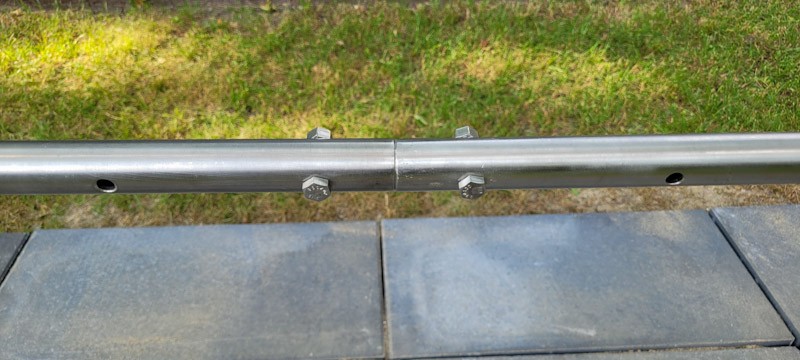
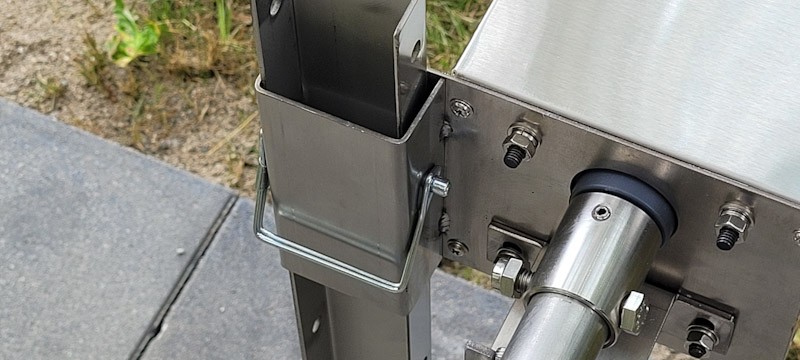
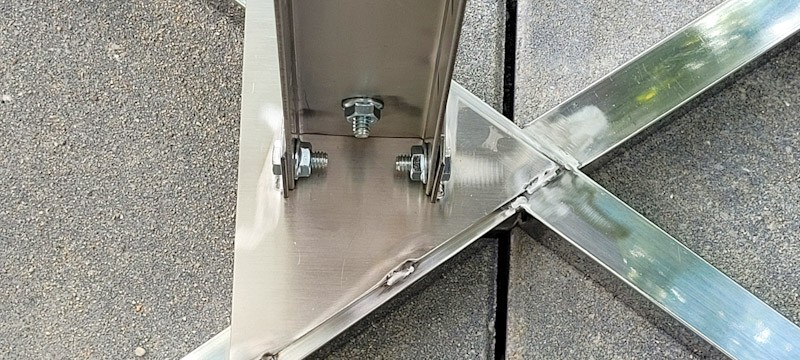
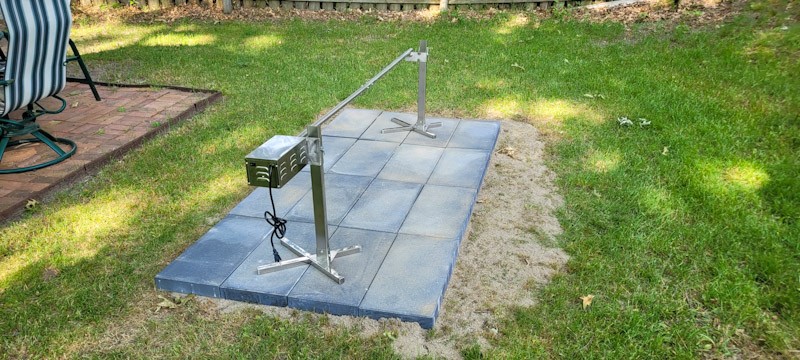
Making a firebox
Again, to look cleaner, my wife had me fabricate a firebox. A pig is cooked via indirect heat so you have a 4″ wide gap or so right under the centerline of the spit with charcoal to the left and the right. I made mine 36″ wide, 3″ tall sides and you will need to confirm your length – it will likely be 54-57″.
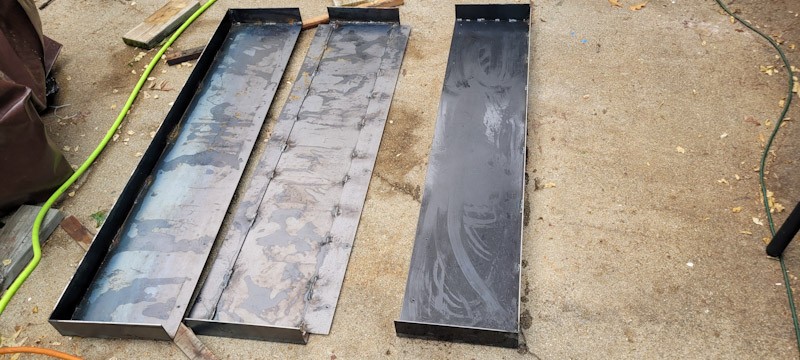
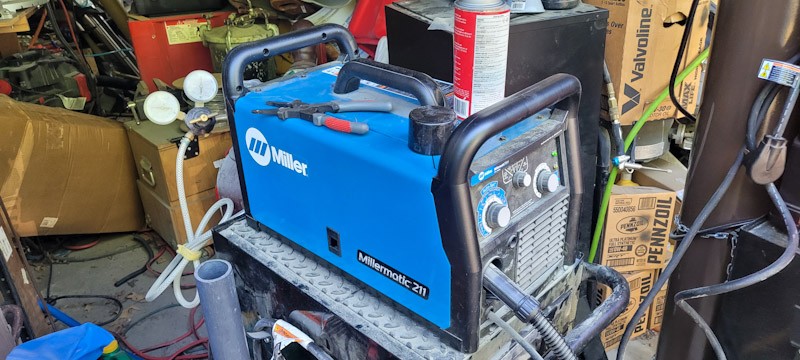
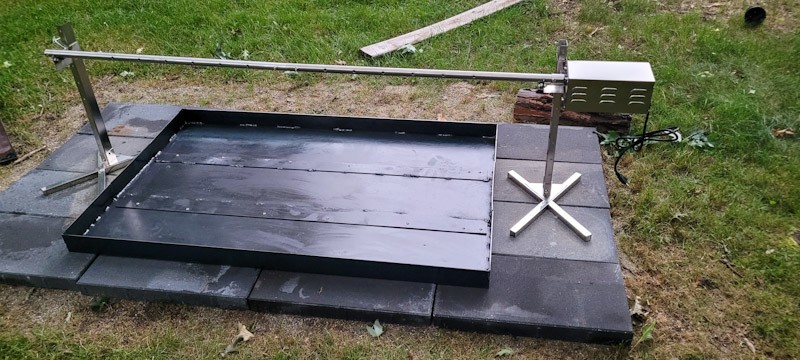
Summary
I felt really good about the SkipJack rotisserie. We had it assembled, tested, the firebox ready – now it was time to test cook a 60 pound pig so we invited some friends over for a cookout on July first. How did it go? How did we season the pig? What were my lessons learned? I’ll tell you in the next post.
By the way, jumping the gun slightly, I can tell you I now recommend SkipJack wholeheartedly and they sell just a ton of stuff for grilling – rotisserie-style and otherwise – check out their Amazon store.
If you find this post useful, please share the link on Facebook, with your friends, etc. Your support is much appreciated and if you have any feedback, please email me at in**@*********ps.com. Please note that for links to other websites, we are only paid if there is an affiliate program such as Avantlink, Impact, Amazon and eBay and only if you purchase something. If you’d like to directly contribute towards our continued reporting, please visit our funding page.
